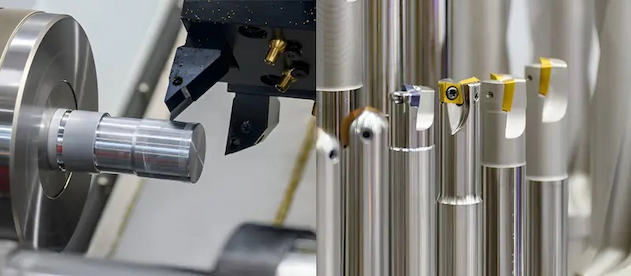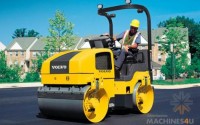How to Choose the Ideal Lathe Cutting Tools for Precision Machining
As a machinist or CNC operator, you know that the quality of your cutting tools can make or break the precision and accuracy of your work. When it comes to lathes, this is especially true – with the right set of cutting tools, you can achieve incredible results in terms of surface finish and dimensional accuracy.
These machines have come a long way from their origin as simple hand tools, and today’s models come equipped with a variety of advanced features and capabilities. However, even the most high-tech CNC operators are only as good as the tools they use.
What Is a Lathe Used For?
In short, a lathe is a wood or metal working machine tool that rotates a workpiece on its axis to perform various operations such as cutting, sanding, drilling, facing, and turning. It uses cutting tools to remove material from the workpiece and create the desired shape or surface.
As such, getting precise and accurate cutting tools for lathe machining can have a significant impact on the end result of your work. You can place these tools at various angles to create different types of cuts, such as straight, tapered, and contoured surfaces.
What Types of Lathe Cutting Tools Are There?
Depending on the specific operation you need to perform, you may need more than one type of cutting tool. Some may be more suitable for roughing out a shape, while others are better for finishing and creating a smooth surface.
Turning Tools
The first category of cutting tools for lathe machining is turning tools. These include the standard tool bit, which is used for general-purpose use and the boring bar, which is used to enlarge holes or create internal features like threads.
The former is made of high-speed steel and can be sharpened to a desired shape, while the latter is usually carbide-tipped and can withstand higher cutting speeds. They’re both held in a tool post, which is attached to the lathe’s carriage and allows for precise positioning of the tool.
Parting Tools
Parting tools are used to create deep cuts that separate a workpiece into two pieces. As such, they have a thin blade and are typically made of high-speed steel or carbide. These tools require careful use and may need frequent sharpening to maintain their effectiveness.
Some common types include the cut-off tool, which is used to make a clean and precise cut, and the grooving tool, which creates a groove or channel on the surface of the workpiece. Parting tools are essential for creating features such as shoulders, tenons, and grooves in various materials.
To use a parting tool properly, it’s important to have a secure grip on the workpiece and to carefully guide the cutting edge along the desired path. The depth of cut should be adjusted according to the material being worked on and may require multiple passes for thicker pieces.
Grooving Tools

Similar to parting models, grooving tools are used to create channels or grooves on the surface of a workpiece. However, these tools typically have a wider blade and can be used for both external and internal grooving.
This category encompasses tools such as the diamond-shaped or square grooving tool, which creates V-shaped channels, and the threading tool, which is used to cut threads on a workpiece. These tools also require precision and caution when in use to avoid damaging the workpiece or creating rough cuts.
Aside from their individual functions, both parting and grooving tools are crucial for achieving specific features and dimensions in a variety of projects. They allow for precise shaping and cutting of materials at different angles and depths, making them valuable assets in any workshop or manufacturing setting.
Chamfering Tools
Chamfering is the process of creating a bevelled edge or cut on a material’s surface. This is often done for aesthetic purposes or to remove sharp edges that may pose a safety hazard. It results in a clean and smooth finish on the workpiece.
Chamfering tools come in various shapes and sizes, including chamfer mills for drilling holes, countersink tools for creating larger bevelled edges, and deburring tools to remove burrs or rough spots on machined surfaces. They are also commonly used in metalworking to prepare parts for welding or fitting.
Proper use of chamfering tools involves carefully controlling the depth and angle of the cut, as well as ensuring that the tool is sharp to avoid any jagged or uneven edges. These tools are versatile and can be used on a wide range of materials such as wood, metal, plastic, and other composites.
Threading Tools
Threading is the process of creating external or internal threads on a workpiece, which are essential for joining parts together. This can be accomplished using threading tools such as taps and dies, which are responsible for cutting the threads into the material.
Taps are used to create internal threads, while dies are used to create external threads. They come in different sizes and shapes depending on the desired thread size and pitch. Threading tools require precision and patience when in use to ensure that the threads are cut accurately without damaging the workpiece.
Aside from their use in traditional machining processes, they can also play a crucial role in 3D printing. In this case, they are used to create screw-like structures in printed parts, allowing for easier assembly and improved structural integrity.



